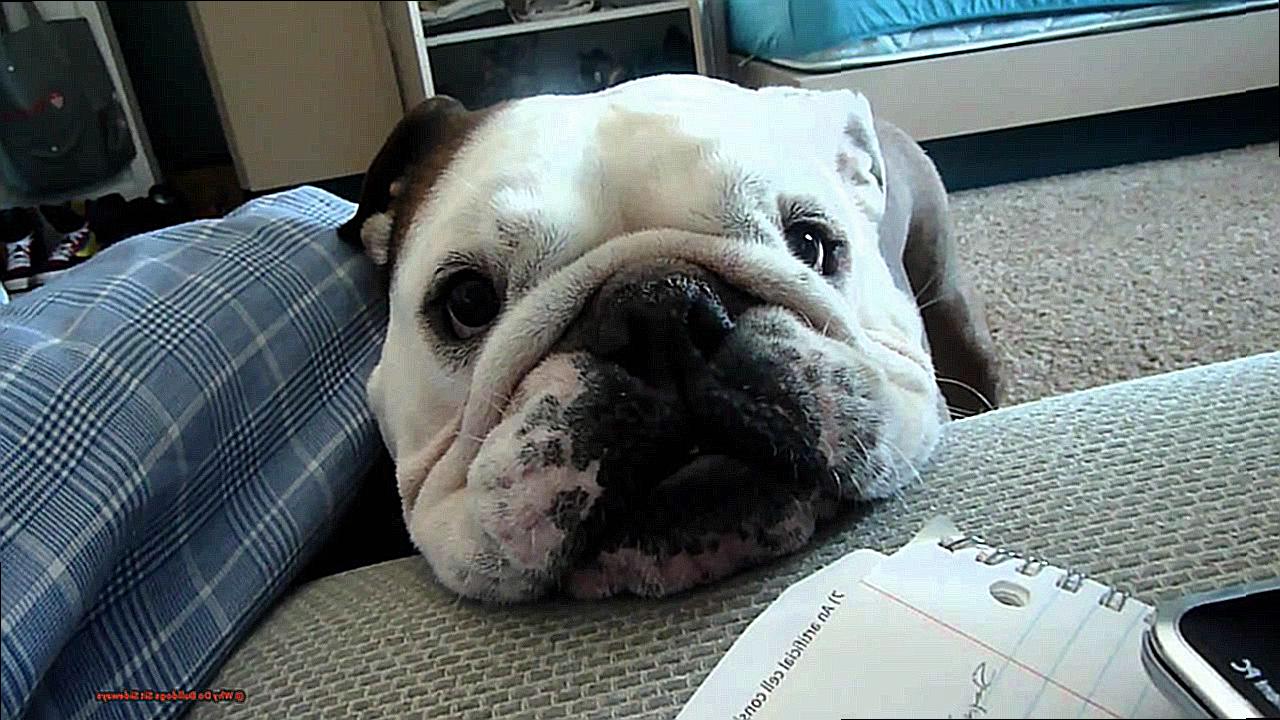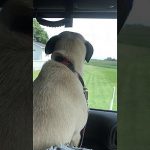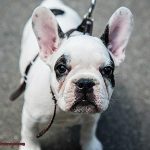Why Do Bulldogs Sit Sideways?
They’re the epitome of cuteness with their squishy faces, chunky bodies, and sassy attitudes. But there’s one thing about these lovable pups that always leaves us scratching our heads – why do they insist on sitting sideways?
If you’ve ever had the pleasure of owning a Bulldog or even just hanging out with one, you know exactly what I’m talking about. It’s like they have a secret code that only they understand.
So grab your furry sidekick and let’s dive into the fascinating world of Bulldogs.
Why Do Bulldogs Sit Sideways?
Contents
- 1 Why Do Bulldogs Sit Sideways?
- 2 Breeding History and Its Impact on Bulldog’s Body
- 3 Physical Limitations and Alternative Sitting Positions
- 4 Sideways Sitting as a Natural Resting Position for Bulldogs
- 5 Overheating and Airway Issues in Bulldogs
- 6 Learned Behavior from Mothers and Puppies
- 7 Solutions for Addressing Sideways Sitting in Bulldogs
- 8 Conclusion
First, let’s discuss the physical characteristics of bulldogs that may contribute to their sideways sitting. These beloved pups have a unique body structure with a short and wide skull, shortened muzzle, and heavy front end. This can make it uncomfortable for them to sit in a traditional position, as their short front legs struggle to support their weight. Sitting sideways allows them to distribute their weight more evenly and avoid straining their necks or putting pressure on their short snouts.
But it’s not just about comfort – sitting sideways also serves a practical purpose for bulldogs. Bulldogs are a brachycephalic breed, meaning they have shortened airways that make them prone to overheating. By sitting with one side of their body exposed to the air, they can regulate their body temperature more effectively and avoid heatstroke. So next time you see your Frenchie sitting sideways on a hot day, know that they are just trying to cool down.
Another interesting theory behind this behavior is that it is a learned behavior from their ancestors. Bulldogs were originally bred for bull baiting, where they would twist and turn their bodies to avoid direct impact from the bull’s horns. This twisting motion may have translated into the modern-day habit of sitting sideways. So while your bulldog may not be facing any bulls nowadays, this instinctual behavior still remains.
Now, you may be wondering if there is any cause for concern when it comes to your bulldog’s sideways sitting. The answer is no. This behavior is completely normal and harmless for bulldogs. In fact, it can be seen as a sign of comfort and contentment in your furry friend.
However, if you notice your bulldog sitting sideways excessively or showing signs of discomfort, it may be a good idea to consult with a veterinarian. They can check for any underlying health issues that may be causing your bulldog to sit in this position.
Breeding History and Its Impact on Bulldog’s Body
While it may seem like a quirky habit, the truth is that this behavior has a deep-rooted history in the breeding of Bulldogs.
Bulldogs were originally bred for the cruel sport of bull-baiting, which required them to have a strong and muscular body with a low center of gravity. This was necessary for them to stay balanced during intense fights with bulls. As a result, breeders intentionally selected for dogs with a wider chest and shorter legs, giving them their iconic appearance and posture.
But it wasn’t just their body structure that was affected by this sport. Bulldogs’ short snouts and wrinkled faces were also desirable traits as they allowed them to grip onto the bull’s face without getting injured. However, when bull-baiting was banned in the 1800s, breeders shifted their focus towards creating a more docile and friendly breed suitable for companionship.
This change in breeding goals had a significant impact on Bulldogs’ physical appearance. As breeders aimed for a more “cute” and “adorable” dog, they continued to select for shorter snouts and rounder faces, resulting in breathing difficulties and other health issues. This could be one reason why Bulldogs often sit sideways – to increase air flow and cool down their bodies.
But it’s not just their brachycephalic breed that causes Bulldogs to sit sideways. Their wide chest and short legs also play a role in this behavior. With a lower center of gravity, it is easier for Bulldogs to balance in a seated position, making it more comfortable for them to sit sideways.
While breeding practices have improved in recent years, with a focus on creating healthier Bulldogs, the legacy of their past breeding history still affects their physical characteristics and behavior. It’s essential for French Bulldog owners to understand this history to better care for their beloved pets.
Physical Limitations and Alternative Sitting Positions
French Bulldogs have become a beloved breed among dog owners for their charming personalities and adorable looks. However, as any Frenchie owner knows, these little dogs have a unique sitting style – sideways. While it may seem cute and quirky, this position is more than just a funny habit; it is a result of their physical limitations and breeding history.
Understanding the Physical Limitations of Bulldogs
Bulldogs, in general, have a distinct body structure that makes it difficult for them to sit in a traditional upright position. Their short, stocky legs and broad chest make it challenging to balance on their hind legs. The French Bulldog, in particular, has a narrower pelvis compared to other breeds, making it uncomfortable for them to sit directly on their hind legs.
Additionally, bulldogs have a curved spine, known as “roaching,” which can make sitting upright for extended periods uncomfortable. This unique body structure can also lead to joint or back problems if they are forced to sit in an upright position for too long.
Alternative Sitting Positions for Comfort
Due to their physical limitations, bulldogs often gravitate towards alternative sitting positions that are more comfortable for them. Two common positions are the “frog leg” and “sphinx” positions.
In the “frog leg” position, the bulldog sits with its hind legs stretched out to the side, resembling a frog’s stance. This position distributes their weight evenly across their body, preventing any strain on their joints or back.
The “sphinx” position involves the bulldog resting its chest on the ground and tucking its hind legs underneath. This position also helps distribute their weight evenly and allows them to rest comfortably.
Accommodating Your Bulldog’s Sitting Preferences
As responsible pet owners, it is essential to understand and respect our bulldog’s physical limitations when it comes to sitting. Forcing them into an upright position can cause discomfort and potential health issues. However, it is also crucial to note that not all bulldogs sit sideways due to physical limitations. Some may simply prefer this position as it allows them to look around and observe their surroundings better.
If you notice your bulldog consistently sitting sideways, it is best to consult with a veterinarian to rule out any underlying health conditions that may be causing discomfort. They can also provide tips on how to accommodate your bulldog’s unique sitting preferences.
Sideways Sitting as a Natural Resting Position for Bulldogs
French Bulldogs are beloved for their distinctive looks and lovable personalities. As a French Bulldog owner, you may have noticed that your pup has a unique sitting position – sideways. Some may see this as a disobedient or lazy behavior, but in reality, it is a natural and comfortable resting position for these specific dogs. In this blog post, we will explore the reasons behind this behavior and why it is perfectly normal for your furry companion.
Physical Limitations and Body Structure
The sideways sitting position of French Bulldogs is directly related to their physical limitations and unique body structure. These dogs have a wide chest and narrow waist, making it challenging for them to sit in a traditional “sit” position with their hind legs tucked under them.
This body structure is a result of their breeding history as bull-baiting dogs, where a wide chest and strong front legs were desired traits for holding on to bulls. As a result, Bulldogs tend to naturally sit in a sideways position, with their hind legs stretched out to the side.
Comfort and Weight Distribution
Sideways sitting allows French Bulldogs to distribute their weight evenly and alleviate any pressure on their joints. This makes it a comfortable resting position for them, especially since they have short and stocky bodies. Sitting upright for extended periods can be challenging for these dogs due to their physical structure, making sideways sitting an ideal option.
Easy Transition to Lying Down
Another reason why French Bulldogs prefer to sit sideways is that it allows them to easily transition into a lying down position. This is another popular resting position for these dogs, as it keeps them cool on hot days and helps them conserve energy.
Inherited Behavior
Some experts believe that sideways sitting may be inherited from the ancestors of Bulldogs. These dogs were known for sitting in a similar manner while waiting for bulls. As a result, this behavior may have been passed down through generations, making it a natural instinct for French Bulldogs.
Similarities with Other Breeds
Sideways sitting is not unique to French Bulldogs. Other breeds with similar physical structures, such as English and American Bulldogs, also tend to sit in a similar way. This further supports the idea that this behavior is natural and comfortable for these dogs.
Overheating and Airway Issues in Bulldogs
If you are a proud owner of a French Bulldog, you may have noticed that they have a unique sitting position – sideways. While it may seem odd or even disobedient to some, this is actually a natural and comfortable resting position for these lovable pups. But why do bulldogs sit sideways? As an expert on bulldog health, I am here to explain the reasons behind this behavior.
Unique Body Structure
Bulldogs have a distinct body structure that sets them apart from other breeds. Their short snouts, wrinkled faces, and stocky bodies may be endearing to look at, but they also come with their own set of challenges. One of these challenges is their difficulty in regulating body temperature.
Brachycephalic Anatomy
The main reason why bulldogs are prone to overheating and airway issues is due to their brachycephalic (short-nosed) anatomy. This means that their skulls are shorter and wider than other breeds, which affects their ability to pant and cool down efficiently. As a result, bulldogs may resort to sitting sideways to get better airflow and cool down.
Improved Airflow
Sitting sideways allows bulldogs to open up their airways and take in more oxygen. This is especially important for bulldogs as they have narrow nostrils and elongated soft palates – two common features of brachycephalic breeds that can obstruct their airways and make it harder for them to breathe. By sitting sideways, bulldogs can alleviate some of the breathing difficulties caused by these physical traits.
Respiratory Issues
In addition to overheating, bulldogs are also prone to respiratory issues such as brachycephalic airway syndrome. This condition is caused by the abnormal shape of their skull, leading to breathing difficulties, snoring, and excessive panting. Sitting sideways can also help with these symptoms by allowing bulldogs to open up their airways and take in more oxygen.
Prevention and Treatment
As a responsible bulldog owner, it is important to be aware of these issues and take precautions to prevent overheating in your pet. This includes keeping them in cool environments, providing plenty of water, and avoiding strenuous activities during hot weather.
Learned Behavior from Mothers and Puppies
If you’re a French Bulldog owner, you may have noticed your furry friend’s unique sitting position – sideways. While it may seem odd at first, this behavior is actually a learned one, passed down from their mothers and littermates. As an expert on bulldog health, let me share with you the fascinating reasons behind this behavior.
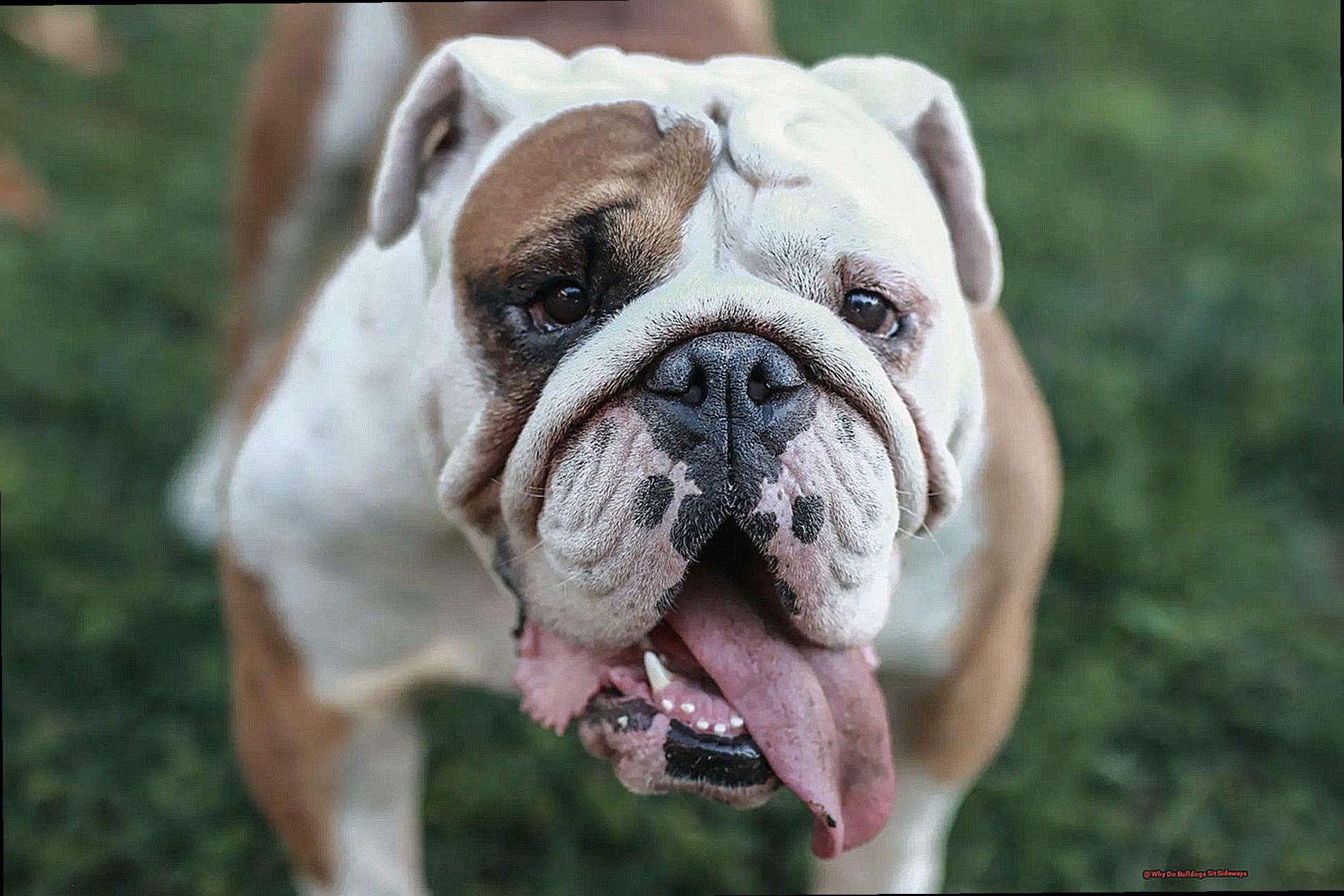
Learned Behavior from Mothers
Bulldogs are known for their strong maternal instincts, and this extends to their puppies as well. As young pups, they observe their mothers sitting in a sideways position and mimic it as a way to bond with them and feel comforted. This behavior is reinforced by their littermates, who also sit in a similar position while playing or resting.
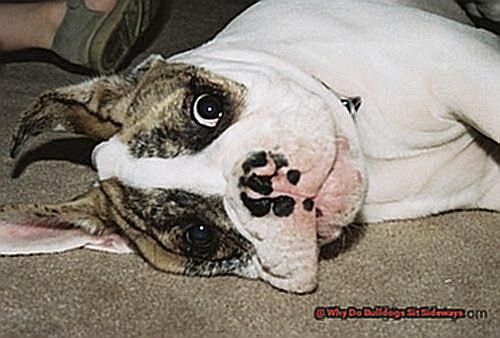
Natural and Comfortable Posture
As bulldogs grow older, sitting sideways becomes a natural and comfortable posture for them. This is due to their stocky and muscular build, making it more comfortable for them to sit in a sideways position rather than upright like other dog breeds. Additionally, their wide chest and broad shoulders can make it challenging for them to balance in an upright position for extended periods of time. Sitting sideways allows them to distribute their weight more evenly and feel more stable.
Similar to Wild Canines
This behavior is also seen in wild canines, such as wolves and foxes. They also sit in a sideways position to rest and conserve energy while keeping an eye out for potential dangers. This instinctual behavior further reinforces why bulldogs sit sideways.
Ingrained Routine as They Age
As dogs age, this learned behavior becomes ingrained in their routine, and they continue to sit sideways even when they are fully grown. It becomes a natural and comforting posture for them, similar to how humans have preferred sitting positions.
Not All Bulldogs Sit Sideways
While this behavior is common among bulldogs, not all of them sit sideways. Some may prefer to sit upright or lay down completely. It ultimately depends on the individual dog’s preferences and environment.
Solutions for Addressing Sideways Sitting in Bulldogs
Let’s dive into the research and explore why addressing this issue is crucial for your Bulldog’s well-being.
Possible Reasons for Sideways Sitting:
There are various reasons why Bulldogs may develop the habit of sitting sideways. One of the main factors is their genetic predisposition, as their body structure and anatomy make it more comfortable for them to sit this way. Additionally, muscle weakness and joint issues can also contribute to sideways sitting in Bulldogs. This can be due to their short and stocky build, which puts extra strain on their joints and spine.
Impact on Daily Activities and Quality of Life:
While sideways sitting may seem harmless, it can actually cause discomfort and pain for your Bulldog. This can greatly impact their daily activities, such as walking, running, and playing. It may also lead to difficulty in getting up or lying down comfortably, hindering their mobility and overall quality of life.
Suggested Solutions:
Fortunately, there are ways to address sideways sitting in Bulldogs and improve their comfort and well-being. Here are some suggestions to consider:
Consult with a veterinarian or canine physical therapist to rule out any underlying medical conditions and create a personalized treatment plan.
Incorporate strengthening exercises into your Bulldog’s routine to improve muscle tone and provide support to their body structure.
Invest in orthopedic beds or supportive furniture to alleviate pressure on your Bulldog’s joints and spine.
Modify daily activities to avoid putting strain on your Bulldog’s body, such as using ramps instead of stairs.
Ensure proper nutrition and weight management to prevent added strain on your Bulldog’s body.
Additional Tips:
In addition to the suggested solutions, here are some extra tips to prevent or manage sideways sitting in Bulldogs:
- Regular exercise and playtime to keep joints and muscles active and healthy.
- Avoid long periods of standing or sitting in one position.
- Consider providing regular massages or physical therapy sessions to improve flexibility and mobility.
Also Read: Can Dogs Eat Potatoes Cooked Potatoes
Conclusion
In conclusion, the endearing sideways sitting position of Bulldogs is not just a cute quirk, but rather a result of their unique anatomy, genetic predispositions, and learned behaviors. This seemingly simple action holds deeper significance and can provide insight into our furry friends’ well-being.
Understanding the physical structure of Bulldogs, with their wide chests and short legs, sheds light on why they prefer to sit in this manner. Additionally, their ancestors’ history as bull-baiting dogs may have influenced their inclination towards this posture. Furthermore, the role of mothers and littermates in teaching this behavior cannot be overlooked.
However, while it may come naturally to them, sideways sitting can also be a sign of potential health issues or physical limitations. As responsible owners, it is crucial to be aware of the impact this behavior may have on our Bulldogs’ daily activities and overall comfort. Seeking professional advice and implementing strengthening exercises can help alleviate any discomfort or pain caused by sideways sitting.
Let us continue to shower our beloved Bulldogs with love and care by understanding and addressing their unique needs.
